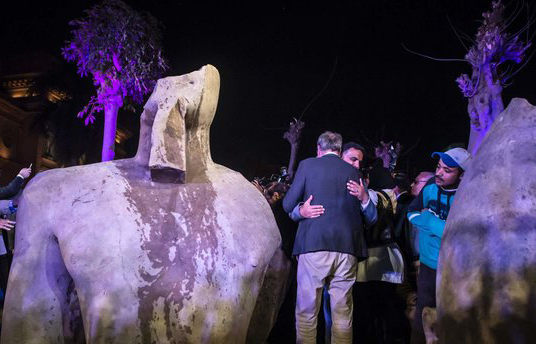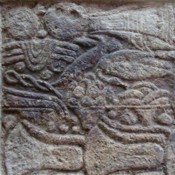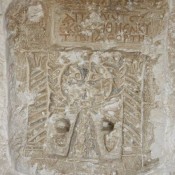The probable identity of the royal colossus discovered last week in Matariya district, Cairo (ancient Heliopolis) was announced yesterday by the Ministry of Antiquities.
The statue was first thought to depict Ramses the Great. However “when the head was lifted, we starde to find some features which are characteristic for other periods,” Antiquities Minister Khaled Al-Anani said.
Few hieroglyphs and initial studies carried out on fragments of the colossus reveal that it belongs to king Psammetich I, who ruled from 664 to 610 BC (26th Dynasty).
The torso’s back-pillar has preserved one of the five names of king Psammetich I, “Nebaa” (meaning “Strong Arm”). If it belongs to the latter, it is the largest statue of the Late Period that was ever discovered in Egypt.
The 26-feet statue is carved in quartzite brought from Al-Gebel Al-Ahmar (Medinet Nasr). It originally measured about 9m in height.
The two fragments of the statue were discovered in ground water, which made their location and extraction extremely difficult. The fragments were found adjacent to a heavily congested housing area, 2 to 3 meters beneath the water. The excavation work was carried out by the Egyptian-German Mission, working in the Temple of Matariya since 2012.
Both fragments (head and torso) were moved by a team of restorers from the Grand Egyptian Museum (GEM), the Egyptian Museum in Tahrir as well as Matariya Antiquities Inspectorate and skilled workmen from Qift.
Both parts and a collection of recently discovered artifacts in Matariya were transported to the Egyptian Museum in Tahrir for restoration and temporary exhibition. They will eventually be exhibited in the GEM, scheduled to be open mid 2018.
The transportation to the Egyptian Museum in Tahrir was carried out on Thursday, March 16, 2017, in collaboration with the Transportation Department of Egypt’s Armed Forces.
The artifact that is on show with the fragments of the royal colossus includes is a relief of King Ramses II. It features King Ramses II with an extended right arm, performing the ritual of anointing the representation of the cult-statue of a goddess. The goddess can be identified by other blocks from this area as Mut.
This relief was found in the remains of a second temple of King Ramses II. The temple of Matariya is well known as one of the most important sites of pharaonic religion, since it was considered to be the place of the world’s creation by the sun-god.
For about 2400 years, most kings erected their monuments in the temple.
Because of the vicinity to modern Cairo, the site was heavily destroyed in antiquity, from the Late Roman times onwards to the Mameluke era, in medieval times.
The blocks of the temple were used to build various monuments in Cairo such as Bab el-Nasr and others.
Therefore, archaeologists believe that more monuments may lay hidden beneath the soil of Matariya.




